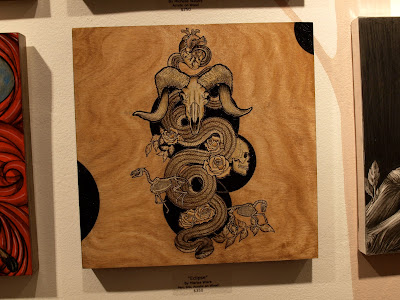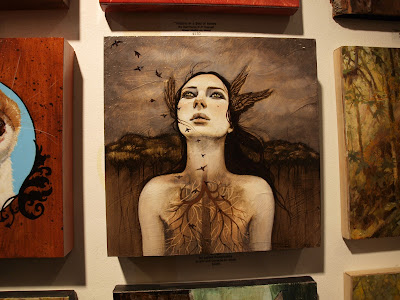This is me, a few years back. I'm high off the ground, at altitude, in the middle of a multi-pitch climb. Perfect time for an emotional breakdown.
lookin good... feelin good.
More often than not, this is how climbing makes me feel. For some reason, I seem to like this place of collapse, where all my carefully maintained walls fall away, and I can no longer hide my hyper-sensitive inner five-year-old cry baby. Climbing is the only aspect of my life that produces such a result, and although painful, I really do find value in the honest look it forces me to take at the most childish recesses of my persona.
I got to fully explore this phenomenon during the month of July. Albeit only for a month, I left the comforts of suburban existence for the freedom of living out of a truck. At the end of the trip, we'd driven through at least six states, crossed the Canadian border twice, gotten robbed once, climbed at nearly all of Canada's best crags, and I'd cried probably twenty two or three times.
bedroom
housepet
hiding from mosquitoes in the living room
The first leg of the trip brought us to a tiny town of 304 people called Ten Sleep, Wyoming. Our motivation for the visit was partly for climbing, but mostly to attend the annual 4th of July party that closes off the main road in town, filling the street with drunken cowboys and their ladies dancing to a country band performing on the back of a semi-truck trailer. It was a pretty priceless cultural experience, and I believe that the locals all enjoyed our attempts to emulate their dance-moves.
After recovering from a heroic hangover, I had one of the best climbing days of my life, flashing two 12bs. I was feeling pretty psyched about this, and I started thinking, that maybe, just maybe, I was finally becoming a legitimate rock climber. I should've known better than to inflate my ego like that.
Ten Sleep cliffs
flashing 'Great White Behemouth" 12b
My relationship with climbing has an uncanny way of smacking me down anytime that I start to think too highly of myself. For the rest of the trip, a full three and a half weeks, it seemed that every place we climbed at was personally engineered to challenge my greatest weaknesses, both physically and mentally.
It began at the Sweatlodge, a newish area that local climber BJ Tilden is developing near Lander, Wyoming. Overhanging, pumpy, and antithetical to my strengths, the alcove-shaped Sweatlodge quickly shut me down. Kicked so uncerimoneously off the high-horse I barely had time to sit on, I managed to keep from throwing what we climbers call a "wobbler" (i.e. highly embarassing temper tantrum).
Lindsay Gasch, not affected by the pumpy conditions
Jonathan Siegrist, never affected by pumpy conditions
Next stop was Squamish, Canada. During a window of sun amidst the never-ending rain, we decided to climb the Grand Wall on the iconic Chief. The 11a route is 10 pitches with some exhilarating exposure and gorgeous views. I got absolutely schooled on the 10b pitch Split Pillar, reminding me that I have no idea how to crack climb and once again giving my ego a good spanking.
me, below... struggling.
Next, we went to Vancouver Island to an area called Horne Lake. We took a ferry through the dismal grey ocean landscape of clouds and mist-- something we were getting used to in Canada. The weather managed to hold up for us so we could climb on the beautiful drip stone cave full of collenettes, tufas, and texture. Despite it's beauty, the climbing is incredibly steep, horizontal even, and I was not very happy about it. The first day was painful. My attitude soured, my fear took over, and my climbing suffered. During the rest of the week that we spent at Horne Lake, I persevered and managed to send my project, which I was proud of-- even if it was a grade that I usually consider easy. It was a circumstance where the arbitrary nature of grades made itself very clear.


From Horne Lake we went to the Canadian Rockies in a town called Canmore. As someone who has grown up surrounded my mountain scenery, it takes a truly spectacular landscape to impress me. The view in Canmore never failed to inspire me with wonder and awe, though the same can't be said for the climbing. We visited various crags in Canmore, and all of them upheld with the theme of the trip-- they were incredibly difficult, mentally and physically, shutting me down. This internal struggle of mine is always exacerbated by the fact that I travel with one of the strongest sport climbers in America, and often find myself surrounded by similarly talented people while I struggle to climb the routes they all effortlessly warm-up on. If I sound like I'm complaining, I'm not. I feel incredibly grateful to climb around some of the best climbers in the world, but it really can be difficult sometimes to constantly be the worst. The amazing thing about the climbing community is that no matter what level you're at, other climbers are likely to support you and get just as excited about you trying hard and sending as they would be with someone who climbs three number grades harder. I always find that to be incredibly heartwarming, and it's aspects like that that make me love the sport in a way that goes beyond just the physical parts of it.

Canmore beauty...
My two favorite area that we visited in Canmore was Planet X, a huge limestone crag that takes about an hour and a half (and about 20 river crossings) to reach. The little river that passes through the canyon is perhaps the most beautiful mountain river I have ever seen, with water so clear that it appears silver. I really didn't have any success there, but the landscape was well-worth the beating.
strong climbers at Planet X... I'm napping somewhere
We ended the trip with a quick stop at Lake Louise, an area that finally suited my style, but we were only there for a few hours. So brief...
Reflecting on the month of July and my time spent living out of a truck, being dirty, not eating enough, being wet and cold, and having daily battles with climbing insecurity, it seems like a beautiful time. Though it was really rough while it was happening, it allowed me to be in a raw, tender state, which for me usually fosters growth. There's something really potent about 'failiure' and challenge, and though I resist and reject it while it's happening, I've come to see the beautiful benefit behind it. So I'll keep feeling gratitude towards the sport of climbing, no matter how often it makes me cry.
onwards...



















































